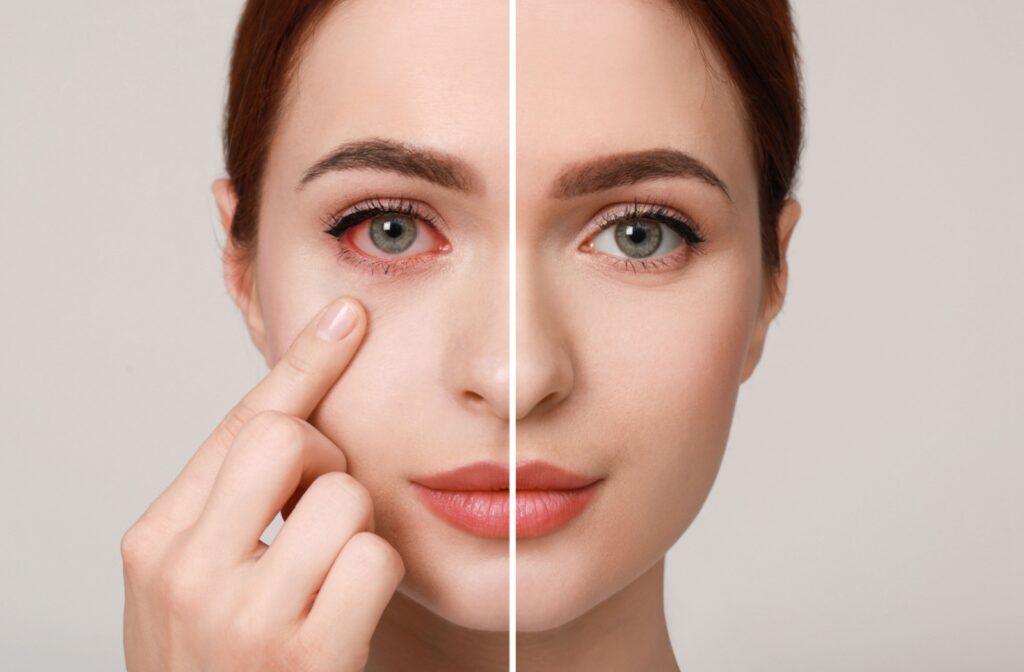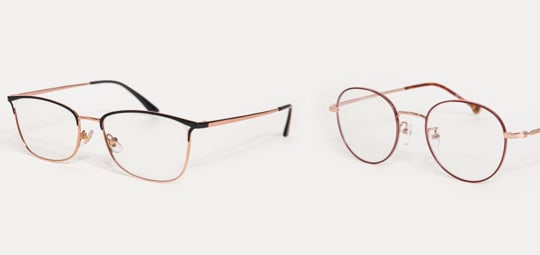As allergy season begins, sinus pressure and itchy eyes are common complaints, but can one lead to the other? A sinus infection can sometimes cause conjunctivitis, or pink eye, due to the close connection between the sinuses and the eyes. Recognizing the link between these conditions can help you manage overlapping symptoms more effectively and know when to seek care from your eye doctor.
In some cases, conjunctivitis may be one of the first signs that a sinus infection is developing, especially when accompanied by eye discomfort and nasal congestion. Early attention can help prevent complications and speed up recovery.
What Is Pink Eye (Conjunctivitis)?
Pink eye, or conjunctivitis, is an inflammation of the conjunctiva, the thin tissue covering the white of the eye and inside the eyelids. It’s highly noticeable and often uncomfortable, with symptoms that include redness, irritation, and discharge. Conjunctivitis can be caused by bacteria, viruses, allergens, or irritants.
Types of Conjunctivitis
Here are the three primary types of conjunctivitis to watch out for:
- Bacterial conjunctivitis: Thick, yellow discharge may accompany redness. This type often spreads quickly through contact.
- Viral conjunctivitis: Caused by contagious viruses, this version leads to watery, itchy eyes and redness.
- Allergic conjunctivitis: Triggered by allergens like pollen or molds, this type is non-contagious but causes significant redness, swelling, and itching.
Understanding which type of conjunctivitis you have is essential for finding the right treatment.
What Is a Sinus Infection (Sinusitis)?
A sinus infection occurs when the sinuses, air-filled spaces around your eyes, cheekbones, and nose, become inflamed. They may fill with mucus, causing congestion, facial tenderness, and headaches.
Sinus infections, like conjunctivitis, develop due to bacteria, viruses, or allergies. They are categorized as either acute (lasting less than four weeks) or chronic (lasting more than 12 weeks).
Symptoms of Sinusitis
- Nasal congestion and discharge
- Discomfort or pressure around the eyes and nose
- Headaches
- Postnasal drip
- Fatigue
Because the sinuses are so close to the eyes, infections in this area can sometimes affect nearby tissues, including the conjunctiva, leading to pink eye.

The Link Between Sinusitis & Pink Eye
Sinus infections and pink eye may occur simultaneously due to the close anatomical connection between the sinuses and the eyes. Bacteria or viruses responsible for a sinus infection can travel through shared nasal and tear drainage pathways, reaching the eyes and causing conjunctivitis.
How Sinus-Related Conjunctivitis Occurs
Sinus-related conjunctivitis can occur due to:
- Bacterial spread: Bacteria from an infected sinus can enter the conjunctiva, causing bacterial conjunctivitis.
- Viral spread: Viruses, such as those causing the common cold, may simultaneously affect both the sinus cavities and eyes, leading to viral conjunctivitis.
If you have sinusitis symptoms and notice red, itchy, or swollen eyes, it’s worth consulting a healthcare provider, especially since treating both conditions effectively often requires a dual approach.
Recognizing the Symptoms of Sinus Infection & Pink Eye
Stay alert for these signs indicating you may have both sinusitis and conjunctivitis:
- Redness in one or both eyes
- Watery or yellow-green eye discharge
- Itchy or irritated eyes
- Tenderness or pressure around the eyes
- Generalized nasal congestion
- Blurry vision
- Mild fever
- Increase in facial pressure (when bending forward or lying down)
If these symptoms appear or worsen, don’t delay visiting an eye care professional who can diagnose and treat your conditions appropriately.
Treating Sinus Infection-Related Pink Eye
Treating conjunctivitis caused by a sinus infection requires addressing both issues simultaneously. Here’s how it’s typically handled:
- Antibiotics (for Bacterial Infections): Help clear bacterial sinus or eye infections.
- Antiviral Medications (for Viral Infections): Target viral attacks on the sinuses and eyes.
- Artificial Tears: Relieve dryness and irritation in the eyes.
- Cold Compresses: Reduce inflammation around the eyes.
- Over-the-Counter Products: Decongestants or saline sprays can help provide relief.
Your treatment plan will depend on whether your pink eye and sinus infections are bacterial, viral, or related to seasonal allergies. Your optometrist or general physician will guide you toward the best solution.
Why You Should See a Doctor During Allergy Season
Spring allergies can wreak havoc on your sinuses and eyes. However, regular checkups with an optometrist can help ensure you’re staying ahead of potential issues like sinus-related pink eye.
Fluctuating pollen levels, rising humidity, and increased outdoor time can all contribute to flare-ups in sinus and eye symptoms. Allergies may also weaken the body’s ability to fight infections, increasing the likelihood of developing pink eye as a secondary issue.
At The Village Eye Care in Surprise, Arizona, we’re passionate about your vision and eye health. Our friendly and knowledgeable team is equipped to diagnose and treat conditions like conjunctivitis, seasonal allergies, and more. With advanced diagnostic equipment and tailored care, we ensure your eyes remain healthy no matter the season.
Schedule Your Comprehensive Eye Exam
If you’re experiencing symptoms of pink eye or other allergy-related concerns, don’t wait. Early care can prevent complications and significantly shorten recovery time. Book an eye exam today at The Village Eye Care to protect your vision and enjoy spring without the stress of irritating symptoms.
















